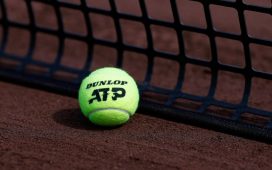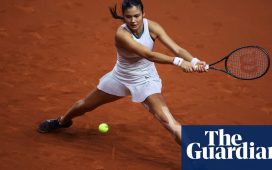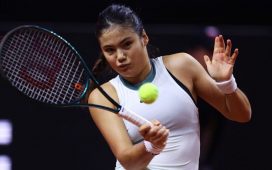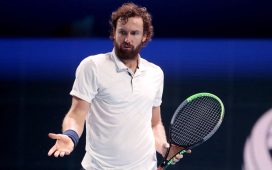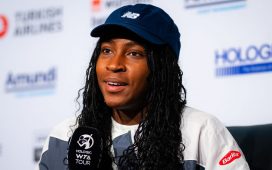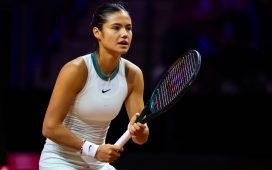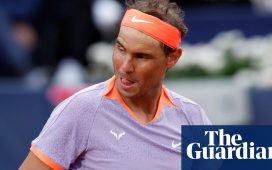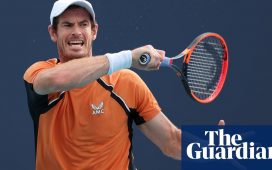What are the skills required on grass and hard courts? What does the future hold for specialists?
The story so far: Rafael Nadal’s comprehensive defeat of World No.1 Novak Djokovic in the French Open final last Sunday earned him a record-extending 13th Roland Garros crown. The Spaniard now has more than double the number of titles the previous Open Era record-holder, the legendary Bjorn Borg, held (6). The summit clash was Nadal’s 100th match win in Paris, a whopping 26 more than second-placed Djokovic, with only two defeats.
How is Nadal’s game suited for clay?
Nadal, like Borg in his heyday, is an exceptional athlete. He moves swiftly across the turf and uses the heavy top-spin game to clear the net and still pull the ball back safely into the court. The slowness of the surface helps construct points better and the hotter summer temperatures generate more bounce, which, coupled with Nadal’s heavy spin, takes the ball away from the strike-zone of most players. The 34-year-old also receives the serve way behind the baseline, waiting for it to slow down to allow himself the time for a full swing at the ball, before moving closer to the baseline to dictate with his forehand. The courts at Roland Garros are among the biggest in the world, allowing Nadal the space to execute this strategy. His aggressive court-positioning during rallies, depth of shot-making, and the ability to play through nerves and be brave on the most crucial of points have stood out of late. This was particularly evident this year, when even the cold, heavy and low-bouncing conditions could not halt his march. The slowed-down court may have even given him that extra fraction of a second to employ his first-strike approach and helped track down Djokovic’s cross-court backhand.
Editorial | Feat of clay: On French Open tennis championship 2020
According to Michael Chang, the 1989 French Open champion, Nadal being a left-hander is another important part of his success. All the spin he puts on the ball breaks in the opposite direction of what players are accustomed to. Among the top 30 male singles players, Nadal and Denis Shapovalov are the only left-handers, giving them an edge. Growing up in Spain is a big factor too, for clay is the natural surface in the country. It not only teaches the virtue of patience, but also helps develop the ability to choose the right moment to go for the kill.
What are the skills required on grass and hard courts?
Grass generally rewards players whose games flow from their serves — Pete Sampras, Roger Federer and Serena Williams, to name a few. Federer’s tennis, through his record eight Wimbledon titles, is instructive. Apart from the serve, no one employs the backhand slice quite like him. On grass, the ball bounces at a low angle and the Federer slice lowers it further and disrupts the rhythm. The ball appears to zip through, forcing the opponent to act faster. Thereby, it exaggerates the speed of the court, which, in turn, plays on the mind and creates indecision in future points. Grass, unlike the crushed brick of Roland Garros, is a living entity and behaves capriciously. No two balls that land on the same spot bounce the same, even when hit at comparable angles and speeds. Federer’s razor-sharp instincts and high skill are often the differentiators.
The hard court, in contrast, is mostly true and rewards a repeatable technique. Unlike grass, it does not wear and tear, and unlike clay, it is not affected by the elements. In terms of speed and bounce, if clay is the slowest and highest, and grass is the fastest and lowest, a hard court is somewhere in between. Djokovic’s style, which does not lend itself to easy categorisation like Federer’s or Nadal’s, has proved the most effective, as his record eight Australian Open and three US Open trophies show. Federer, too, has a combined total of 11 titles in Melbourne and New York, but he won seven of those before Djokovic won his first. The Serb hits a clean, efficient and flat stroke, devoid of top-spin. No one in modern-day tennis takes the ball as early as him and smothers it. This is particularly true of his fine two-hander, which he uses to forcefully change direction or hit flat down the line. Blessed with fleet-footed movement, especially side-to-side, Djokovic is a master at regaining balance and readying himself for the next shot. The acrylic is unforgiving and requires supreme fitness. But Djokovic’s endurance levels are such that he can come up with short bursts of intense, momentum-shifting tennis over long periods of time.
What does the future hold for specialists?
Improvement in racquet technology has, in fact, brought surfaces closer. Compared to yesteryear’s small racquets with clearly demarcated sweet spots, the large-headed modern versions have made hitting through the court easier. The effect of this has been the most pronounced at Wimbledon. With the grass slowing down and the bounce truer and higher, the net-rushing game has become a rarity. In 2001, when Federer beat Sampras and made the last eight, 71% of all his points were serve-and-volley. In the 15 years after that, during which he won seven of his eight crowns at SW19, such points crossed 20% only thrice. Djokovic winning Wimbledon five times and Nadal securing the US Open on four occasions to emerge as the last decade’s most successful champions at the respective Slams are said to be the clearest examples of homogenisation of courts. Lending further credence to this is the fact that Federer and Djokovic, having triumphed just once in Paris, have both reached the final on four other occasions. Nadal’s at the Australian Open is a similar record — winner once and a losing finalist four times.
But across the seven Majors in 2019 and 2020, a pattern has been observed. Nadal has trumped both Federer and Djokovic at the French Open; Djokovic has felled both Nadal and Federer at the Australian Open, and Federer outwitted Nadal at Wimbledon and came within a single stroke of repeating it against Djokovic. Tennis across surfaces may be closer than ever, but it appears that there is still room for the specialist to work his magic.
